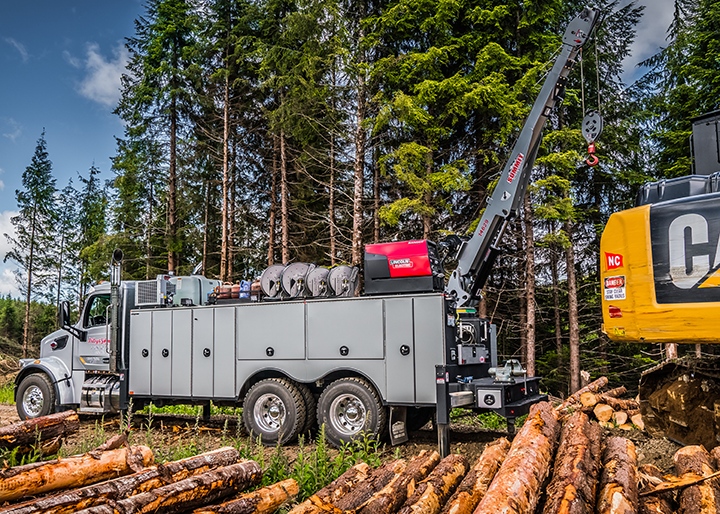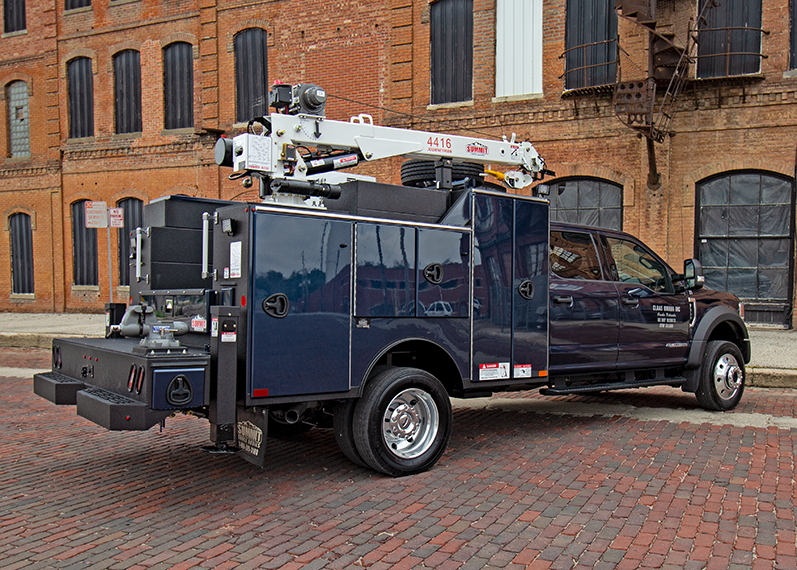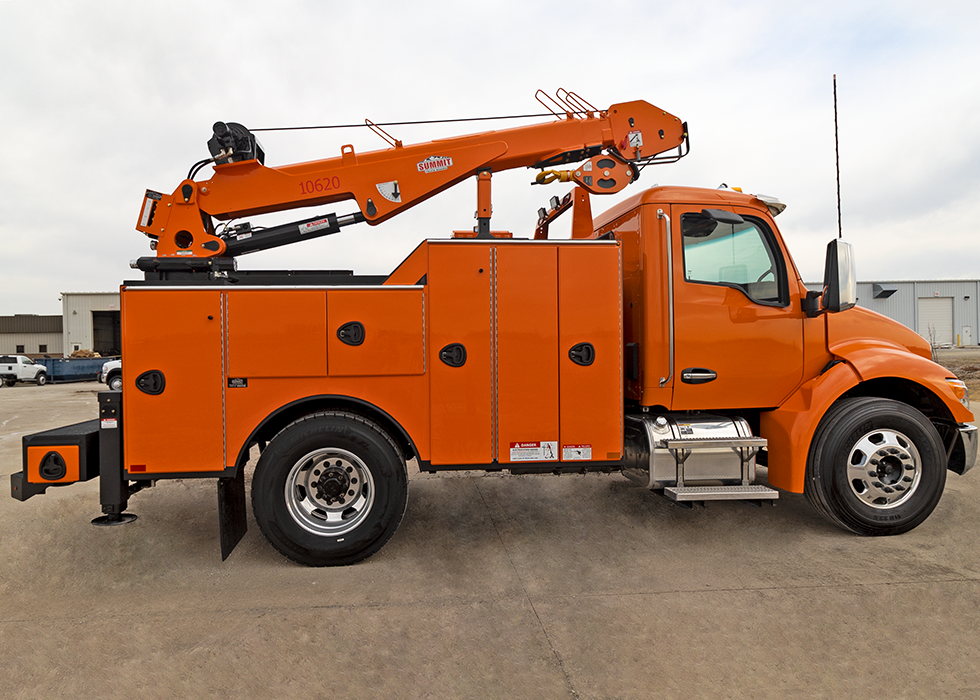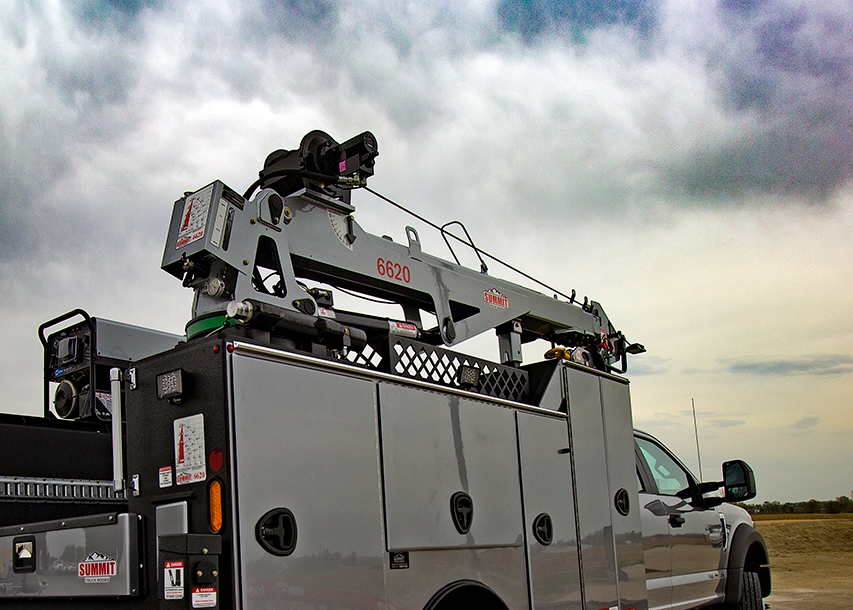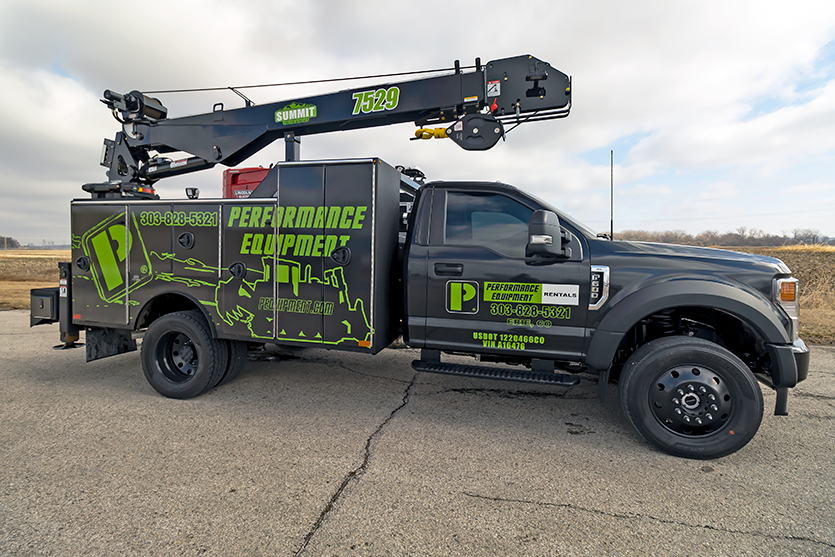A mobile service crane is an indispensable tool in the field service industry. Imagine a field service mechanic in the heart of a construction site, faced with a critical equipment breakdown. The clock is ticking, and transporting the hefty machinery to a repair shop seems impractical. This is where the unsung hero, the service truck-mounted crane, steps in. These versatile machines are pivotal in on-site repairs, eliminating the need for cumbersome transportation and minimizing downtime. In this guide, we delve into the crucial considerations for selecting the right service crane and navigate through the intricate details that make these machines the backbone of efficient field service operations.
Key Considerations for Selecting a Mobile Service Crane
Service cranes come in different sizes and lifting capacities to cater to various applications. Several important factors must be considered when selecting a crane for your service truck. Here are some key considerations.
Lifting Capacity
Determine the maximum weight you anticipate lifting with the crane. Choose a crane with a lifting capacity that can handle your intended loads. Consider the maximum lifting capacity and the capacity at various boom lengths and angles.
Boom Length and Reach
Consider the required reach and height for your lifting tasks. The boom length should be adequate to reach the desired working area. Keep in mind any potential obstacles or obstructions that may limit the available working space.
Crane Configuration
Different crane configurations are available, such as telescopic or knuckle boom cranes. Each design has its advantages and limitations. Evaluate your requirements and consider the reach, maneuverability, and stow space. Summit offers hydraulics and electric/hydraulic telescopic cranes.
Mounting Space and Compatibility
Assess the available space on your service truck for mounting the crane. Ensure that the crane you select is compatible with your truck’s specifications and structural integrity. Consider any weight limitations imposed by the truck manufacturer.
Control System
Evaluate the control system of the crane. Look for features like ease of operation, precision control, and safety features like overload protection and emergency stop functions. Consider whether you need a manual, hydraulic, or electronic control system based on your preferences and requirements.
Safety Features
Ensure the crane has appropriate safety features, such as load moment indicators, outriggers/stabilizers, anti-two block systems, and audible alarms. Safety should be prioritized in crane selection to protect operators and the surrounding environment.
Maintenance and Service
Consider the availability of service and support for the crane. Look for reputable manufacturers or suppliers that provide reliable after-sales support, spare parts, and maintenance services.
Regulatory Compliance
Ensure the crane meets your location’s relevant safety and regulatory standards. Compliance with ANSI/ASME, OSHA, and local regulations is essential for safe and legal operation.
Operator Training
Adequate training is crucial for safe crane operation. Consider the availability of training programs or resources for operators to ensure they are adequately trained to operate the crane safely and efficiently.
In addition to this list of considerations, one can select the type of crane, such as hydraulic or electric, based on the specific application and environmental factors like noise and emissions.
Summit Hydraulic or Electric Mobile Service Cranes
The most commonly used service truck cranes utilize hydraulic systems that transmit power using fluid. These cranes are renowned for their reliability, versatility, and ease of use. They are suitable for lifting heavy equipment, materials, and tools. You can find different hydraulic cranes, such as telescopic and knuckle boom cranes, each with unique lifting capacity and reach. Summits Advanced Safety Electronics (ASE) Phase 4 crane operating system is standard on hydraulic cranes mounted on truck bodies. This crane operating system increases safety and performance with features that prevent use in unsafe conditions and crane overloading. Additional features provide crane operators with information and functionality to make their work safe and efficient.
On the other hand, electric cranes use an electric motor to power the lifting mechanism, an alternative to hydraulic cranes. They are often used in environments where noise and emissions are a concern, such as urban areas. Electric cranes require less maintenance than hydraulic ones and come in different types, such as wire rope and chain hoists, each with unique lifting capacity, reach, and other features. When selecting an electric crane, consider the voltage and power supply required and the type of control options available. Summit’s electric hydraulic cranes come with a single-function wireless control system. Learn more about the basics of telescopic cranes.
Lifting Capacity and Zones
Let’s reiterate that understanding the crane lifting capacity and zone charts is crucial for safe and efficient operation. The load chart provides information about the maximum weight a crane can safely lift under specific conditions. It takes into account various factors such as the crane’s structural integrity, stability, boom length, angle of lift, and other operational considerations. Conversely, the zone chart provides information on the areas where a crane can safely lift a load. The zone chart has a series of colored zones indicating where the crane operates safely and should not be used due to the risk of tipping or overloading.
Referring to the lifting capacity and zone charts is essential to ensure you are operating a crane within safe working limits. Exceeding the crane’s lifting capacity or operating in the wrong zone can result in accidents, equipment damage, or even loss of life. When operating a crane, it is crucial to factor in the weight of the load, the position of the load, and the wind conditions. Doing so ensures safety and efficiency. Luckily, Summit has all this data programmed into the crane operating system.
Selecting the Right Crane
In conclusion, mobile crane trucks are valuable for any field service mechanic. Choosing the right crane for your service truck involves considering various factors, such as weight and size, maximum reach and height, lifting capacity, mounting location, power source, and control options. Both hydraulic and electric cranes have unique advantages and disadvantages. Summit’s cranes range in lifting capacities from 4K to 14K, reaching 21 or 29 ft. Learn more about our most popular hydraulic mobile service crane models, the 7529 and 10629 cranes.
Now that you what to consider when selecting a crane for your work truck, read our blog post, Custom Service Trucks: How to Build the Ultimate Work Truck

